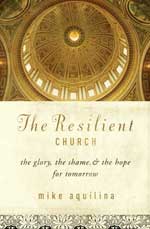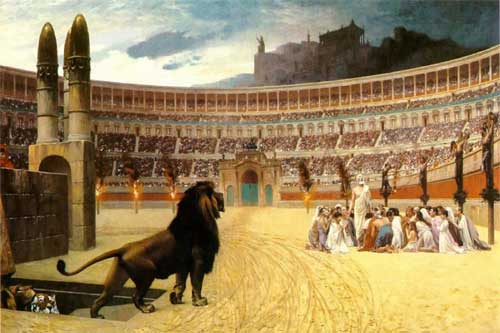Today marks the Memorial of the Martyrs of Vietnam often referred to as the Memorial of Andrew Dung Lac and Companions. This is an interesting memorial in that the number of martyrs commemorated include about 117 names of known martyrs but also the untold thousands whom we do not know. Furthermore, the memorial is for martyrs from various times in Vietnam’s history, from the 17th through the 20th centuries.The memorial was set by Pope John Paul the Great on June 19th, 1988. He canonized 117 Vietnamese but noted that there were somewhere between 130,000 to 300,000 martyrs for the Catholic faith in that nation. The suffering of these people has been astounding. In the 19th century, when persecution of Catholics was at its worst, entire villages of Vietnamese were slaughtered by the regime. The reason given was that the Catholics were involved in political revolutions, attempting to put a Catholic-friendly ruler into power. Being Catholic, then, became a crime, and, echoing the years of Christian persecution in Ancient Rome, Vietnamese were called upon to stomp on a crucifix to prove that they were not Christian. Those who refused were tortured horribly and then killed. The lucky ones were only branded on their faces with the Vietnamese words for “perverse religion.”
During the fall of Vietnam to Communist rule in the 20th century and of course due to the war, many Vietnamese fled their homeland and came to the United States. Interestingly, since about 1977, the American Vietnamese community has had a four-day celebration in little Carthage, Missouri dedicated to Our Lady and in celebration of their heritage and faith. The Marian Days Festival happens every year in the summer and the small Missouri town is inundated with upwards of 50,000 Vietnamese who celebrate Mass together, sing to Our Lady of Fatima, and eat really good Vietnamese food.
 Cardinal Nguyen Van Thuan (1928-2002)
Cardinal Nguyen Van Thuan (1928-2002)
This memorial to the Vietnamese Martyrs ought to remind us of one of the greatest of Vietnamese Catholics, Cardinal Francis Xavier Nguyen Van Thuan. Cardinal Francis Xavier, as he liked to introduce himself, had a meteoric rise in Vietnam as a young man. The son of very devout Catholic parents, he was extremely bright. He earned advanced degrees in theology, philosophy, and canon law all by the time he was in his early twenties.
He eventually became the coadjutor bishop of Saigon in 1975. Six days later, Saigon fell to the North Vietnamese, and the Cardinal was thrown into prison. He spent thirteen years there, nine of them in solitary confinement. While in confinement a village boy would bring him paper, and Cardinal Van Thuan would write down some encouraging word or phrase. These messages from the Cardinal in prison helped bouey the people for which he was still a shepherd. They have since then been compiled into the books The Road to Hope and Prayers of Hope.
He was released from prison in 1988, the same year as the canonization of the Vietnamese Martyrs. He was allowed to leave for Rome in 1991, but was then never allowed back by the government…that is until 2001.
While in Rome, he made many impressions on people, not the least of these being Pope John Paul the Great. It was that Holy Father who in 1994 elevated the little bishop from Vietnam to be President of the Pontifical Council of Justice and Peace and made him a Cardinal.
In 1999, in the document to us Ecclesia in America (The Church in America), John Paul wrote:
54. Faced with the grave social problems which, with different characteristics, are present throughout America, Catholics know that they can find in the Church’s social doctrine an answer which serves as a starting-point in the search for practical solutions. Spreading this doctrine is an authentic pastoral priority. … In this regard, special care must be taken to train lay persons capable of working, on the basis of their faith in Christ, to transform earthly realities. In addition, it will help to promote and support the study of this doctrine in every area of the life of the particular Churches in America, especially in the universities, so that it may be more deeply known and applied to American society. The complex social reality of the continent is a fruitful field for the analysis and application of the universal principles contained in this doctrine.
To this end, it would be very useful to have a compendium or approved synthesis of Catholic social doctrine, including a “Catechism”, which would show the connection between it and the new evangelization.
It was then up to Cardinal Nguyen Van Thuan to try to make heads or tails out of the vast array of social documents and social commentary, to try to bring together people from vastly different political and social backgrounds, to try to – in Herculean manner – build an edifice for the Social Doctrine of the Church that would at once stand the test of time but also be relevant to our lives here and now. This was no small task, but it was his.
 Two Saints Embrace
Two Saints Embrace
The Compendium we have now is a splendid work which accomplishes everything that the good Cardinal desired. Unfortunately, he died before its completion in 2002. Still the preliminary work and guidance which he provided proved decisive for the construction of one of the most useful tools for the social doctrine that exists. Cardinal Van Thuan’s process for canonization was opened in 2007, having met the minimum 5 years. Pope Benedict XVI actually mentions Cardinal Van Thuan in his second encyclical Spe Salvi as a “witness to hope.”
So on this day of remembrance for the Vietnamese Martyrs, remember them, remember Cardinal Francis Xavier Nguyen Van Thuan, and remember to be thankful for the great peace and tranquility that our culture affords us in being able to pray freely.
I’ll leave you with the ten rules of life by which the Cardinal lived. Go here to learn more.
 1. I will live the present moment to the fullest.
1. I will live the present moment to the fullest.
2. I will discern between God and God’s works.
3. I will hold firmly to one secret: prayer.
4. I will see in the Holy Eucharist my only power.
5. I will have only one wisdom: the science of the Cross.
6. I will remain faithful to my mission in the Church and for the Church as a witness of Jesus Christ.
7. I will seek the peace the world cannot give.
8. I will carry out a revolution by renewal in the Holy Spirit.
9. I will speak one language and wear one uniform: Charity.
10. I will have one very special love: The Blessed Virgin Mary.
Oh and this:
I am happy here, in this cell, where white mushrooms are growing on my sleeping mat, because You are here with me, because You want me to live here with You. I have spoken much in my lifetime: now I speak no more. It’s Your turn to speak to me, Jesus; I am listening to You.
Recorded on the Feast of the Holy Rosary, October 7, 1976, in Phu-Khanh prison during his solitary confinement. Regnum Novum
 Thanks one again Omar G. for an outstanding contribution to our on going formation!
Thanks one again Omar G. for an outstanding contribution to our on going formation!

 Pick up a copy of Mike’s book.
Pick up a copy of Mike’s book.







